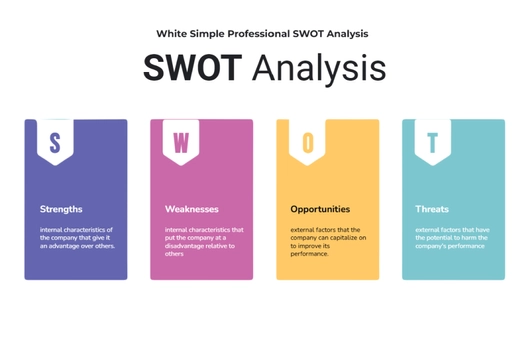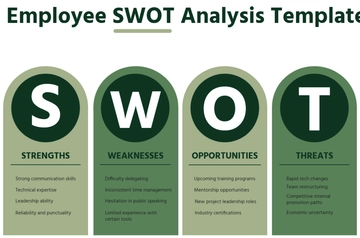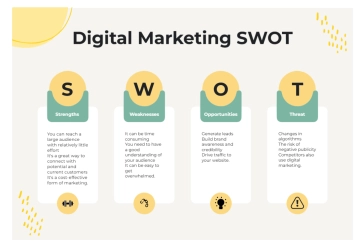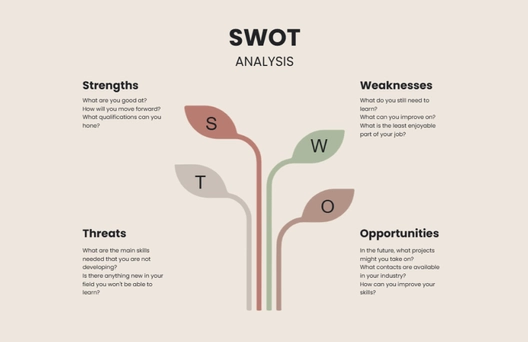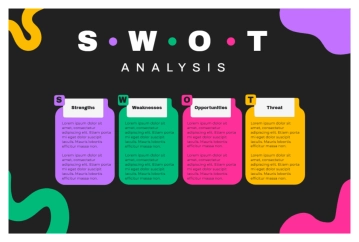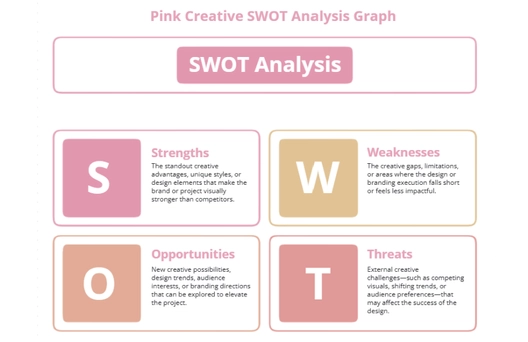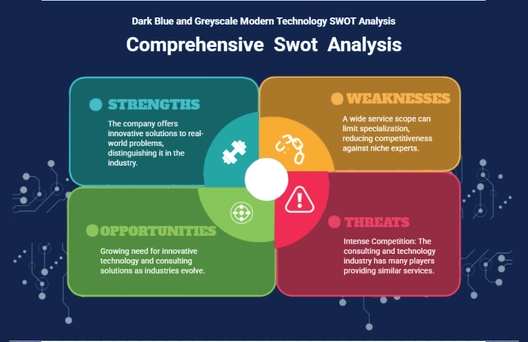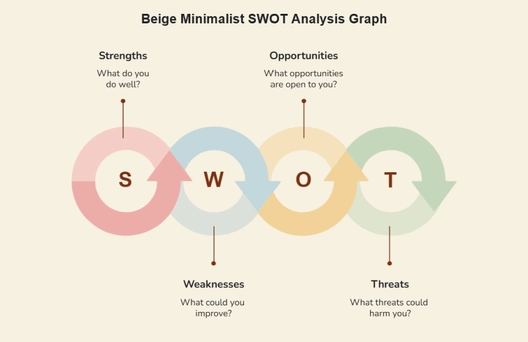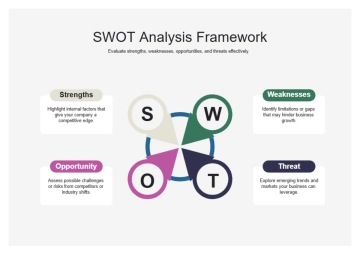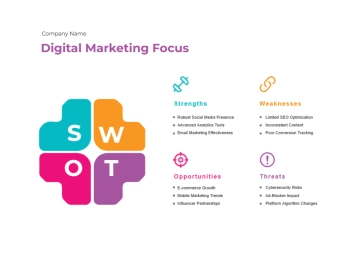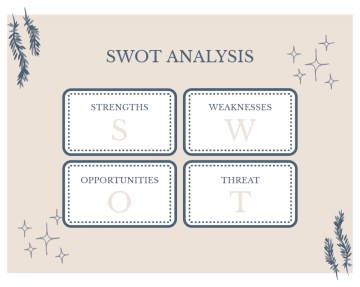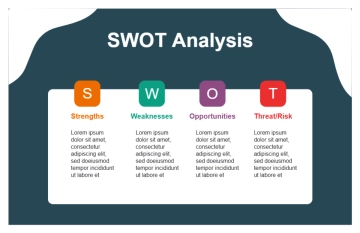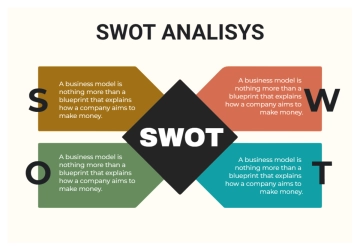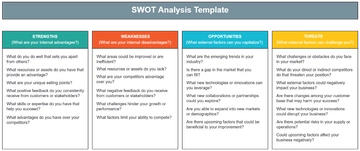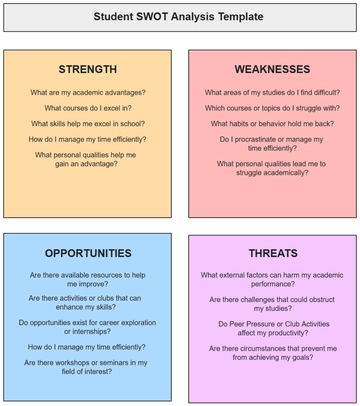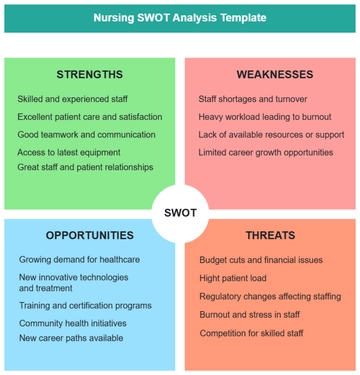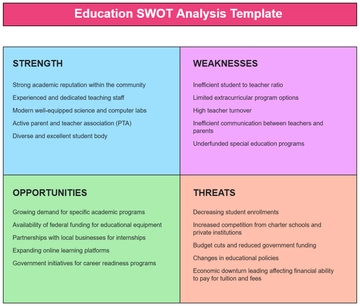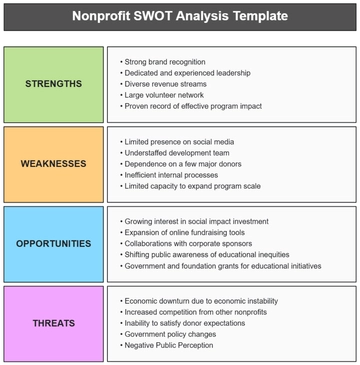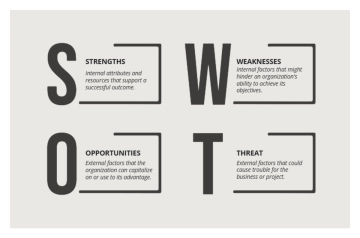Free Health & Safety Training SWOT Analysis
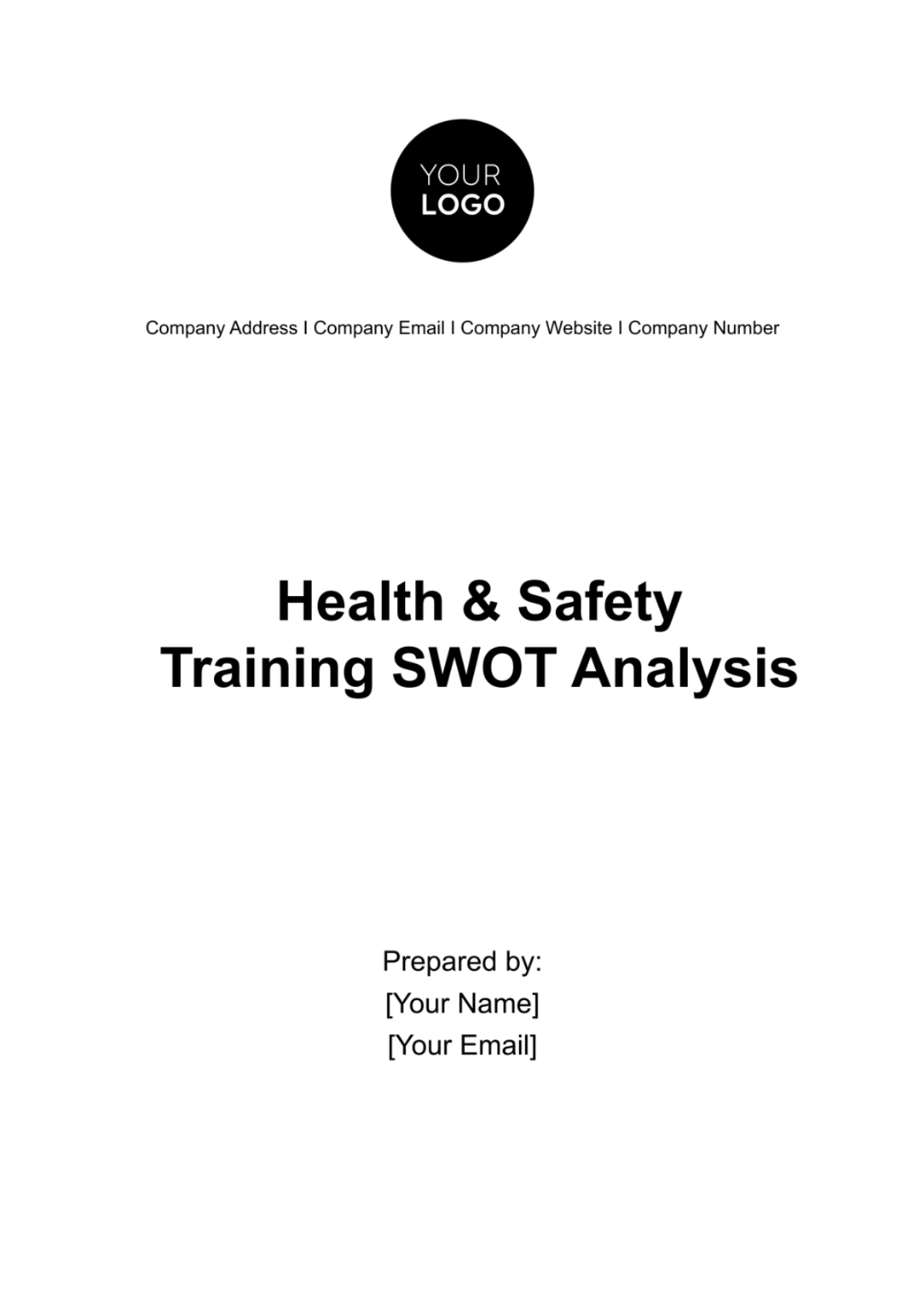
I. Introduction
The SWOT Analysis is designed to offer a strategic evaluation of the Health & Safety Training program at [Your Company Name]. It aims to critically assess the program's alignment with organizational safety goals and the evolving needs of the workforce. This analysis will serve as a foundational tool for informed decision-making and strategic planning in training development.
Our current Health & Safety Training encompasses diverse modules, targeting various safety risks and compliance protocols. As workplace environments and safety challenges evolve, it becomes imperative to continually assess and adapt our training approaches to ensure maximum effectiveness and relevance.
The findings from this analysis will not only highlight the current state of our training program but also provide insights into potential areas for growth and development. This evaluation is crucial for maintaining a high standard of workplace safety and ensuring that our training efforts are both efficient and impactful.
II. Strengths
In this section, we identify the core strengths of our Health & Safety Training program. These strengths form the backbone of our current training effectiveness, highlighting areas such as participant engagement, quality of training content, and the expertise of our trainers. Understanding these strengths is crucial for building upon what works well and ensuring that these positive aspects continue to be emphasized and improved.
A. Internal Positive Aspects
The program's interactive training modules have resulted in high levels of employee engagement and participation, indicating effective methods in content delivery.
Trainers with extensive experience in health and safety bring valuable insights and real-world knowledge to the training sessions, enhancing the learning experience.
The integration of practical exercises, such as emergency drills and equipment handling, ensures that employees not only understand safety protocols but can also apply them effectively.
B. Resource Utilization
The training program makes excellent use of the latest digital learning platforms, which facilitates accessibility for all employees and supports various learning styles.
A balanced approach to budget allocation allows for the inclusion of high-quality training materials and resources, maximizing the impact of financial investments in safety training.
III. Weaknesses
This section critically examines the areas where our Health & Safety Training falls short. This introspection is vital for identifying gaps in content, delivery methods, and overall program structure. Acknowledging these weaknesses is the first step towards making necessary improvements, ensuring our training remains relevant and effective in addressing the ever-evolving safety needs of our workforce.
A. Internal Negative Aspects
Certain areas of the training content have not been updated to reflect the latest industry standards and safety practices, leading to gaps in employee knowledge.
The absence of a structured follow-up system post-training has resulted in diminished long-term knowledge retention among employees.
B. Areas for Improvement
There is a pressing need to regularly update training modules to include emerging safety challenges and updated compliance regulations.
Developing a system for continuous learning, such as periodic refresher courses and online resources, will help sustain and reinforce key safety concepts.
Tailoring training sessions to cater to various job roles and departments will ensure that the training is more relevant and practical for all employees.
IV. Opportunities
Opportunities present potential areas for growth and enhancement in our Health & Safety Training. This section explores external factors such as advancements in training technologies, emerging industry trends, and potential partnerships that can be leveraged. Capitalizing on these opportunities can significantly elevate the effectiveness and reach of our training program.
A. External Positive Influences
Emerging technologies like VR can be utilized for more immersive and impactful training experiences.
Partnerships with safety organizations can provide access to expert knowledge and resources.
Increased focus on workplace safety across the industry presents an opportunity to position the company as a leader in safety training.
B. Market and Industry Trends
Incorporating the latest industry best practices and regulatory updates into training programs.
V. Threats
This section delves into external challenges and threats that could impact the effectiveness of our Health & Safety Training. By identifying potential risks such as regulatory changes, budget constraints, and emerging workplace hazards, we can develop strategies to mitigate these threats. Proactive threat management is essential for maintaining the relevance and efficacy of our training program.
A. External Negative Influences
Frequent changes in safety regulations and standards require agility in training adaptation, posing a challenge to keep the content consistently up-to-date.
Budgetary constraints in the face of economic fluctuations could limit the ability to invest in new training technologies and resources.
New types of workplace hazards, such as those related to cybersecurity, are not currently addressed in the training program, leaving a knowledge gap.
B. Risk Mitigation Strategies
Establishing a dedicated team to monitor regulatory changes and update training content accordingly will help maintain compliance and relevancy.
Exploring cost-effective training solutions and seeking external funding or grants for training enhancements can offset budget limitations.
Conducting regular risk assessments and industry benchmarking will ensure that emerging risks are promptly integrated into the training curriculum.
VI. Strategic Recommendations
This section outlines actionable steps and initiatives that [Your Company Name] can undertake to enhance the Health & Safety Training program. These recommendations aim to address identified gaps, capitalize on opportunities, and safeguard against potential threats, guiding the program towards continuous improvement and effectiveness.
A. Actionable Steps
Incorporate VR and AR technologies to simulate real-life safety scenarios, providing hands-on learning experiences.
Foster partnerships with safety professionals and organizations for expert content and resource sharing.
Regularly review and update training content to include the latest safety standards, regulations, and emerging risks.
Develop personalized training pathways and modular content to cater to different roles and learning styles.
Allocate a dedicated budget for training innovation, focusing on the implementation of new technologies and methodologies.
VII. Implementation Plan
This plan outlines the specific steps, timelines, and responsible parties for each recommended action. It ensures that the improvements to the Health & Safety Training program are translated into practical, actionable tasks. The plan will also include monitoring mechanisms to track the progress and effectiveness of the implemented changes.
Action Steps: Define clear and concise steps for each recommendation, specifying who is responsible for what and by when.
Resource Allocation: Detail the resources required for each action step.
Timeline: Establish a realistic timeline for the implementation of each recommendation, with milestones to track progress.
Monitoring and Evaluation: Outline methods for monitoring the implementation process and evaluating the outcomes against predefined success criteria.
VIII. Feedback and Continuous Improvement
This section emphasizes the importance of ongoing evaluation and continuous improvement of the Health & Safety Training program. It focuses on establishing a feedback loop from various stakeholders, including trainers, participants, and management, to ensure that the training program remains dynamic and responsive to changing needs and conditions.
Feedback Mechanisms: Set up regular feedback channels such as surveys, focus groups, and feedback sessions to gather insights from all stakeholders involved in the training process.
Analysis of Feedback: Regularly analyze the feedback received to identify trends, new challenges, and areas for further improvement.
Adaptation and Evolution: Use the insights gained from continuous feedback to adapt and evolve the training program, ensuring it stays relevant and effective in meeting the organization's Health & Safety objectives.
IX. Documentation and Reporting
The Documentation and Reporting section highlights the importance of maintaining comprehensive records and reports of the Health & Safety Training program’s progress and effectiveness. This final section underscores the need for systematic documentation as a tool for transparency, accountability, and historical reference, which is essential for the long-term success and scalability of the training initiatives.
Record-Keeping: Establish guidelines for documenting all aspects of the training program, including training materials, participant attendance, assessment results, and feedback.
Regular Reporting: Set a schedule for regular reporting on the training program’s progress, challenges, and successes to stakeholders, including management and employees.
Data Analysis for Insights: Use the collected data to generate insights and inform future decision-making, ensuring the training program is data-driven and results-oriented.
X. Conclusion
The SWOT Analysis of the Health & Safety Training program at [Your Company Name] has methodically illuminated both the formidable strengths and notable weaknesses within the current framework. The analysis has revealed a spectrum of opportunities and threats that hold significant sway over the program’s future direction. The potential integration of advanced technologies and collaborative industry alliances offers promising prospects for innovation and growth. This endeavor, grounded in a commitment to continuous improvement and adaptability, is poised to reinforce [Your Company Name]'s standing as an organization that prioritizes and invests in its workforce’s safety and well-being.
- 100% Customizable, free editor
- Access 1 Million+ Templates, photo’s & graphics
- Download or share as a template
- Click and replace photos, graphics, text, backgrounds
- Resize, crop, AI write & more
- Access advanced editor
Introducing Template.net's Health & Safety Training SWOT Analysis Template, a strategic tool for assessing training programs. Fully customizable and editable using our Ai Editor Tool, this template allows businesses to evaluate strengths, weaknesses, opportunities, and threats in their safety training initiatives. Optimize training effectiveness and mitigate risks effectively with this versatile solution from Template.net.
